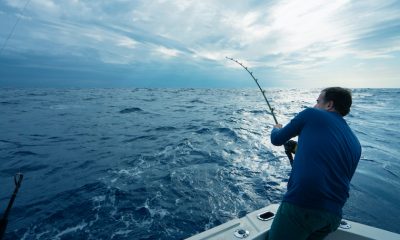Sports & Travel
Up Your Game: The Ultimate Goalie Skates Buying Guide
Every goalie, beginner or pro, should own a decent pair of ice skates specialized for goalies. Same as with any sport, it’s specialized footwear that can make a huge difference in your overall experience. The specific design of these shoes provides more protection and balance than the shorter, thinner blades of standard hockey skates. Skates for goalies enable them to move rapidly and laterally throughout the crease to position themselves for a save better.
Furthermore, the design of a goalkeeper skate blade holder, popularly known as a Tuuk, enables the goaltender to grip the ice at a greater angle. In other words, once you’ve made the switch, it’s doubtful that you’ll find yourself wanting to switch back to normal hockey skates.
Style and Preference

Benefit your hockey game with high-quality goalie skates. The traditional goalie skate has undergone significant changes over the past few years. The most significant alteration to the skate occurs within the cowling or holder. This is the section of the skate that runs across the bottom of the foot and contains the steel. Traditionally, this section has extended across the inside of the ankle bone, providing a broad covering for the toe.
So, goalies are now focusing on minimizing the cowling and achieving a higher attack angle and recoveries. The goalie skates for sale have also become lighter and stiffer to match the weight and stiffness of playing skates. Steel has also begun to change with goalies, including a reduction in still width from 4 mm to 3 mm for easier sharpening, edge transfer, and weight. Finally, steel is now higher, which, combined with a smaller cowling size, provides an unparalleled advantage for movement.
Size and Fitting
Player skates and goalie skates are the same size. Typically, choose a skate that is 1 to 1 ½ sizes smaller than your shoe size. It is acceptable for youngsters to order a half size larger to accommodate growing feet; however, ordering any larger would result in blisters and tear down the boot’s sides. A player’s mobility and balance will also suffer if he or she wears a too-large skate.
When trying on skates, wear socks that are similar to those you would be wearing while playing. After putting on the skate, press your foot forward as far as possible, ensuring that your toes are against the front of the skate. When in this position, you should be able to fit one finger between the inside of the boot and the heel of your foot. Now, sit down and firmly press your heel on the back of the boot.
Tighten the laces through the first 2-3 eyelets until the skate is snug at the toe. Remember to keep your foot flat on the ground while lacing up the skate. After lacing up the skate, move around to test its comfort level. Remember that it takes a few uses to break in your skates; the more you wear them, the faster they will mould to your foot. It is also critical to get your blades sharpened regularly—ideally, every 6-8 hours of practice or game time.
Customization
Skates are the most underutilized type of specialized equipment. A properly working skate can alleviate foot pain and tension while also providing the goalie with the best connection to the ice possible. Custom choices include a complete foot mould in any size, the number of eyelets running up the skate, the stiffness of the interior and outside panels, tongue thickness/height, and steel size. All of these alternatives can help a goaltender achieve the best feel, and practically every company offers the customized skate option.
Features
Advancements in technology have enabled manufacturers to create a skate that is safe for use at the sport’s highest level, the NHL, without the use of a cowling. Hockey goalie skates are made of high-impact plastic and carbon fibre, which can withstand high-impact shots during a game or practice, providing a safer playing experience.
On the other hand, if you’re an old-school goalie wondering where the skate cowling has gone, don’t worry. Skates with a cowling are heavier and provide fewer performance benefits than goalkeeper skates without one. This technological development is known as the “One Piece” skate design. Two-piece goalkeeper skates are those that include a cowling.
Use and Maintenance

The goalie skates are available in various levels of protection and are composed of specific materials to withstand different activities. Professional skates are meant to be used 4-7 times per week, senior skates 2-5 times per week, and lesser senior skates 1-3 times per week.
Additionally, comfort and stability are essential for a proper posture. Taking the footbeds out after each use can help dry the skates, wiping down the blades and cowlings with a skate towel will limit the possibility of rusting, and keeping skate guards on will reduce the risk of losing an edge against any item in the bag.
Writing for the blog since 2012, Chris simply loves the idea of providing people with useful info on business, technology, vehicles, industry, sports and travel – all subjects of his interest. Even though he sounds like quite the butch, he’d watch a chick flick occasionally if it makes the wife happy, and he’s a fan of skincare routines though you’d never have him admit that unless you compliment his impeccable skin complexion.
























